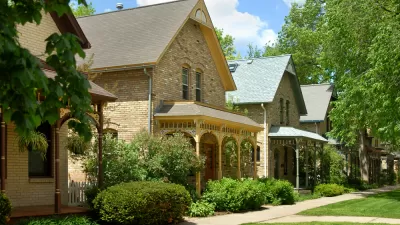The demographic milestone shows how the U.S. is quickly becoming a nation of minorities - and also shows the rapid aging and lower birth rates of the white, non-hispanic demographic. However, due to immigration, the total white population increased.
Greg Toppo and Paul Overberg report on the new U.S. Census Bureau estimates for 2012 released June 13. The development had been expected to occur at the end of the decade.
Between July 2011 and July 2012, an estimated 12,400 more white Americans died than were born, says demographer Kenneth Johnson of the University of New Hampshire's Carsey Institute. As recently as 2010-11, white births outpaced deaths by 29,600.
While barely growing, whites make up 64% of the population and won't become a minority until 2050 if current trends continue, write Toppo and Overberg.
William Frey, a demographer at the Brookings Institution explains the connection of the shrinking non-Hispanic white population to the economy and funding of some of America's social welfare programs.
He predicts that white retirees "will be on the receiving end of an economy which will be fueled largely by the efforts of Hispanics, blacks and Asians," whose birth-to-death ratios are not headed in the same direction.
Frey states that "one of our challenges this century (will be) having a large part of the old Baby Boom understand it's the young people who are really their benefactors."
The Census also reported on the rate of growth of the country's racial and ethnic groups.
- Asian population rose 2.9% last year, much of it because of immigration, to 18.9 million
- Hispanics grew 2.2% to just over 53 million
- African Americans grew by 1.3% to 44.5 million
- Native Hawaiians and Other Pacific Islanders climbed 2.2 percent to about 1.4 million
- American Indians and Alaska Natives rose 1.5 percent to a little over 6.3 million
- Whites grew by 0.1%
The current U.S and world population can be seen on the Census Population Clock.
FULL STORY: Census: More deaths than births among whites

Study: Maui’s Plan to Convert Vacation Rentals to Long-Term Housing Could Cause Nearly $1 Billion Economic Loss
The plan would reduce visitor accommodation by 25,% resulting in 1,900 jobs lost.

North Texas Transit Leaders Tout Benefits of TOD for Growing Region
At a summit focused on transit-oriented development, policymakers discussed how North Texas’ expanded light rail system can serve as a tool for economic growth.

Why Should We Subsidize Public Transportation?
Many public transit agencies face financial stress due to rising costs, declining fare revenue, and declining subsidies. Transit advocates must provide a strong business case for increasing public transit funding.

How to Make US Trains Faster
Changes to boarding platforms and a switch to electric trains could improve U.S. passenger rail service without the added cost of high-speed rail.

Columbia’s Revitalized ‘Loop’ Is a Hub for Local Entrepreneurs
A focus on small businesses is helping a commercial corridor in Columbia, Missouri thrive.

Invasive Insect Threatens Minnesota’s Ash Forests
The Emerald Ash Borer is a rapidly spreading invasive pest threatening Minnesota’s ash trees, and homeowners are encouraged to plant diverse replacement species, avoid moving ash firewood, and monitor for signs of infestation.
Urban Design for Planners 1: Software Tools
This six-course series explores essential urban design concepts using open source software and equips planners with the tools they need to participate fully in the urban design process.
Planning for Universal Design
Learn the tools for implementing Universal Design in planning regulations.
Ascent Environmental
Borough of Carlisle
Institute for Housing and Urban Development Studies (IHS)
City of Grandview
Harvard GSD Executive Education
Toledo-Lucas County Plan Commissions
Salt Lake City
NYU Wagner Graduate School of Public Service



























